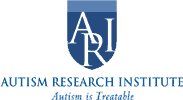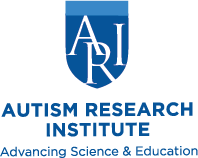Because this webinar was delivered in live Q&A format, no certificates of participation were be offered.
Downloadable handouts include:
Emergency form for local agencies – https://ariconference.com/webinars/emergency.pdf
Alternative courtroom testimony options – https://www.ariconference.com/webinars/criminal_system.pdf
ASD witnesses – testifying in court: https://ariconference.com/webinars/asd_courtroom2.pdf
Communication between judges, attorneys and law enforcement: https://ariconference.com/webinars/asd_courtroom3.pdf
Published: 06/08/2016

Ms. Taylor served as chair of the “Safe and Sound” task force for the Autism Society of America and received the President’s Award from the Autism Society of North Carolina. She helped to develop training criteria and legislation to mandate training for law enforcement and first responders in North Carolina on the issues of recognition and response to individuals on the autism spectrum. In addition, she served on the Board of Disability Rights of North Carolina for six years helping to advocate for all disabled people in North Carolina. She was elected District Bar Councilor for the 22A Judicial District of North Carolina in 2011 and re-elected to this position in 2014. She also serves on the Legislative, Grievance, Authorized Practice of Law and Distinguished Service Committees of the N.C. State Bar.
In December 2006, Ms. Taylor was appointed by North Carolina Speaker of the House Joe Hackney and Senator Jim Black to serve on North Carolina Joint Study Committee on ASD which works to identify and address safety issues affecting people with Autism Spectrum Disorder. The committee recommended modifications to training for law enforcement, first responders, judges, lawyers and others serving the court system. Modifications to the N.C. Rules of Evidence and to the definition of “disability” in the N.C. General Statutes were recommended and adopted. This work continues through efforts to encourage training of all groups having contact with ASD individuals.
Introducing the National Autism History Museum – Part 2
Dr. Rimland's Vision | Why an Autism History Museum? | What to Expect | Hours Why an autism history museum? Museums serve as foundations that preserve and illuminate periods in our collective past.
ARI: Advancing our Understanding of Autism
Established in 1967, the Autism Research Institute (ARI) is the world's longest-standing organization dedicated to autism research. For more than half a century, we’ve worked to improve the quality of life for
Meltdowns & Calming Techniques in Autism
Meltdowns and tantrums present with similar characteristics and are challenging to navigate; however, the root causes of tantrums and meltdowns are very different, and it is crucial to manage them accordingly. Understanding
Report from a Think Tank on Aging and Autism Published
In 2017, Autism Canada, The Pacific Autism Family Network, and ARI facilitated a think tank on ASD in adulthood and later life in Vancouver, BC. Meetings focused on collaboration around common priorities
Research on non-psychoactive cannabis extract use for autism symptoms
Learn about emerging research on the effectiveness of cannabidivarin (CBDV) on irritability and repetitive behaviors in children with ASD. CBDV is a non-psychoactive chemical compound and does not cause
Capacity-Building in Adult Services
Linda Walder Fiddle, founder of The Daniel Jordan Fiddle Foundation, possesses singular optimism and vision when it comes to advancing the quality of life and citizenship for adults with autism spectrum disorders.







